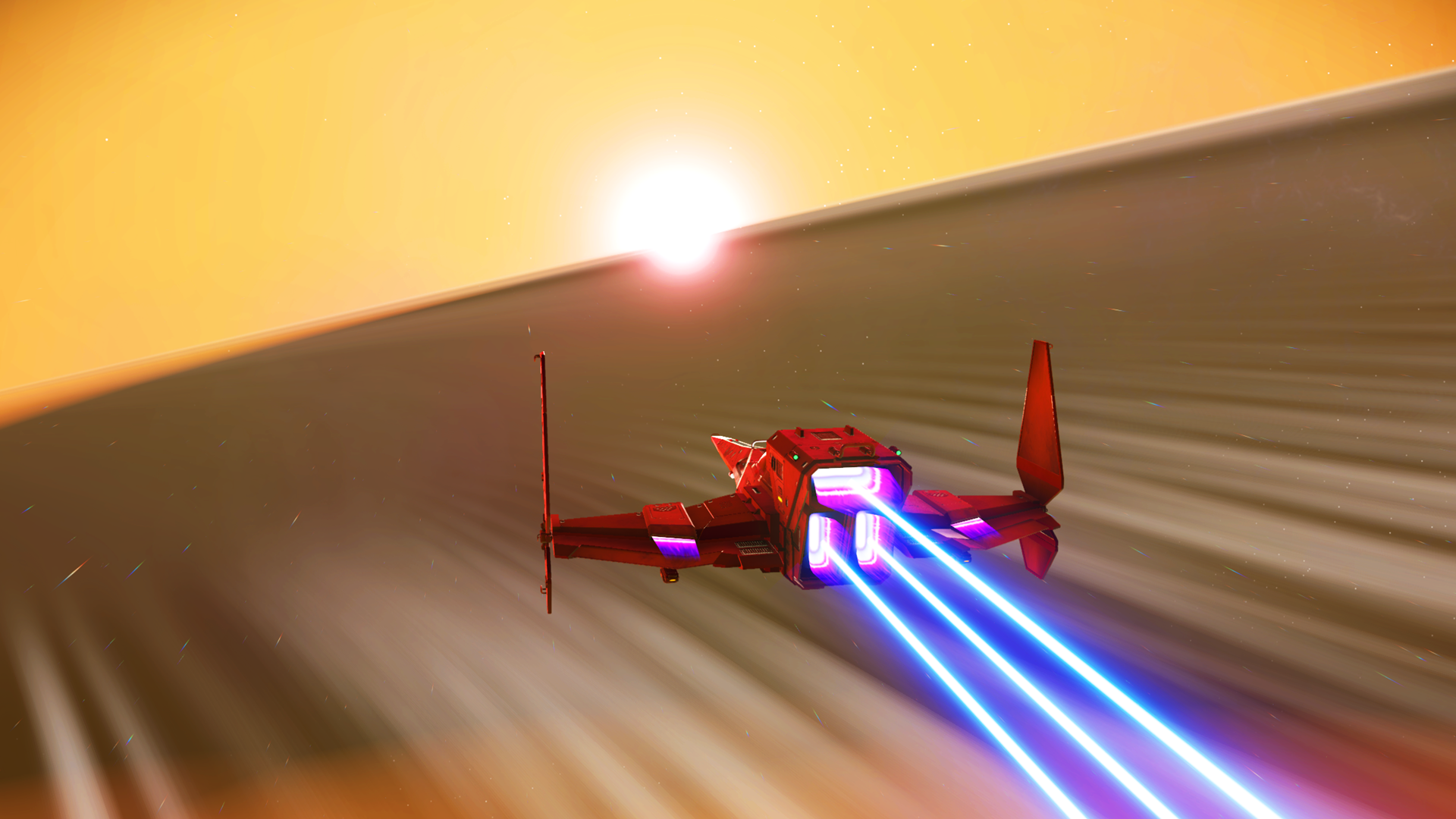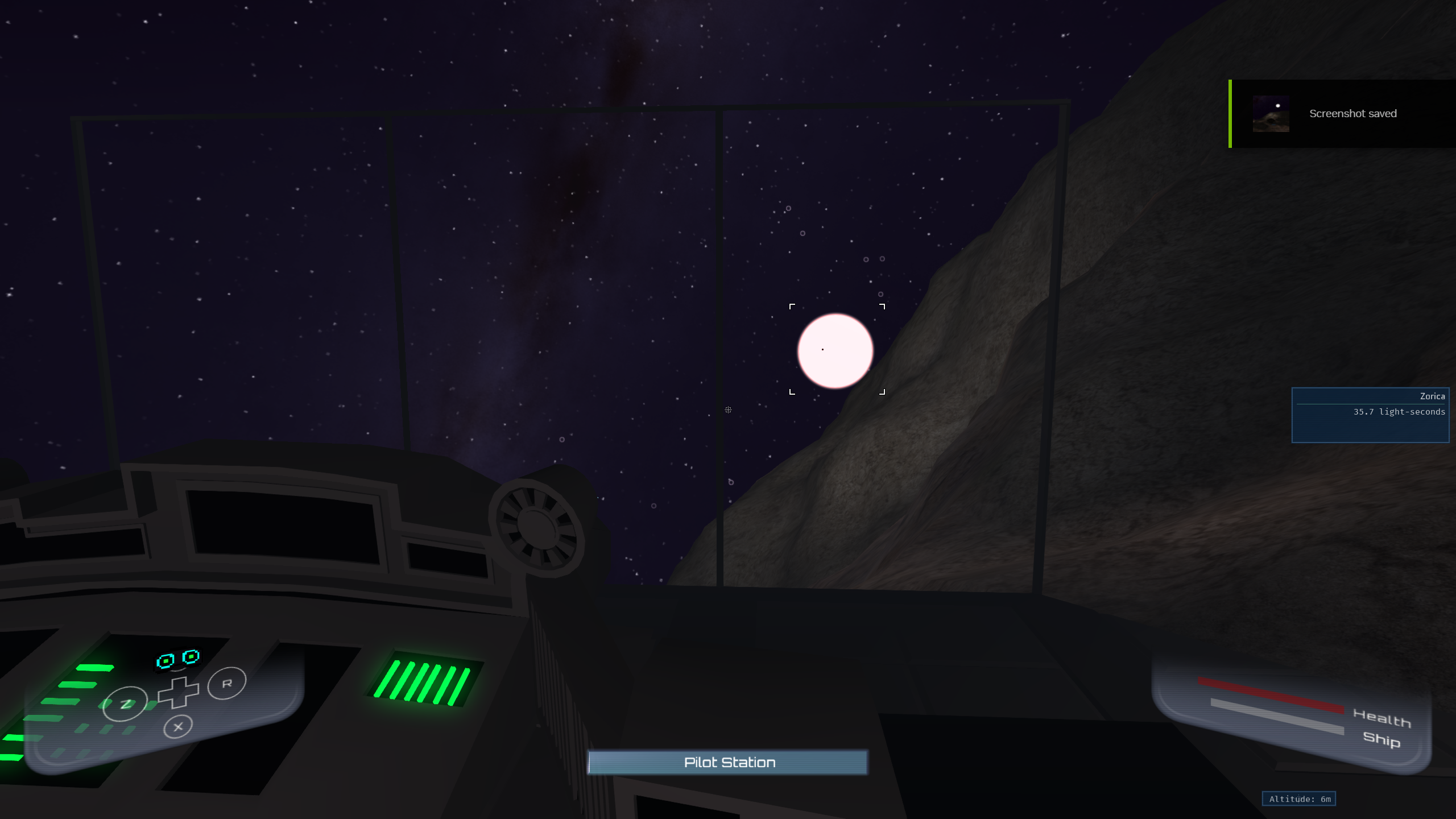
If videogames had to flawlessly simulate everything they depicted, developers would still be stuck on the behavior of neutrinos. Games are illusory. The cool take-off and landing animations in Star Wars Outlaws are essentially live loading screens, but if it feels like we've just gone from the surface of Tatooine to outer space, they've done their job.
But, having acknowledged that games are smoke and mirrors, I want to stand up for a feat of simulation that has gotten a little beat up as of late: the ability to seamlessly, manually fly from outer space to a planet's surface and back again. It's just really, really cool, no matter how good the reasons are to not engineer it into every space game.
Bethesda space RPG Starfield didn't include seamless planetary landings because building them would've meant spending a lot of time on something that's "really just not that important to the player," Todd Howard said in 2022, and Ubisoft said something similar about Star Wars Outlaws. Including the ability to fly around over the surface of planets would have required "a huge amount of effort for very little payoff," game director Julian Gerighty told Edge. (See the video above for a comparison between planetary landings in Star Wars Outlaws, Starfield, and No Man's Sky via YouTube channel NikTek.)
Bethesda and Ubisoft both might've been right not to design the kind of space travel you find in No Man's Sky or Elite Dangerous. How would it be useful to land anywhere on a planet in Outlaws? What would be there? Starfield and Outlaws are RPGs which direct players through a story. They're not sims. Free spaceflight doesn't belong in every space game.
On the other hand, the space exploration in Starfield was a bit disappointing. The ambition of Skyrim was to plop us into a huge fantasy landscape where nothing was painted into the skybox: "That mountain is not just a backdrop, you can walk all the way to the top of that mountain," Howard famously said. The contemporary version of that ambition would've been to hurl us into an outer space where preposterous distances could be traversed on the sci-fi equivalent of horseback, but Starfield dismissed distance with fast travel and represented planetary landings with loading screens.
I wonder what Starfield would've been like if it'd been scaled down to a single star system and the top priority had been maintaining the illusion that you're really hauling yourself around in a pressurized box?
I haven't played a ton of it, but I'm still very charmed by 10-year-old early access space game Rodina. The graphics may be simple, but there's no question that the ship whose corridors I can explore in first-person is the same ship I'm landing on asteroids in the third-person piloting view: When I exit the pilot's chair, the view out the windows is still bouncing up and down as the ship settles on the low-G surface I clumsily plopped it on.

It's that sense of physical reality—my spaceship feeling like an actual container—combined with continuity across huge changes in scale that really does it for me. No Man's Sky engine programmer Martin Griffiths recently posted a video (embedded below) demonstrating the engine's capabilities with its debug camera, and despite the flashes of light that mark transitions between one level of detail and another, the journey from a lake's shore to orbit is mesmerizing.
Even if the seamlessness of No Man's Sky's space travel is debatable, it remains a great technical achievement eight years later, and you don't see lots of other technical feats lauded today. Ray tracing is frequently ridiculed as a pointless frame rate hog developed by an industry that hasn't moved on from a graphical arms race that players lost interest in years ago, and the $700 PS5 Pro announced this week was met with expressions of indifference over its fancier graphics capabilities.
I’ve seen quite a lot of debate recently about loading times and smoke and mirrors in space games - so thought I’d show you all the #NoMansSky debug camera .. a nice demo of how seamless and powerful our engine is! PS5 running here, with video from an iPhone… 3 planets in 50… pic.twitter.com/NOyy1qVgnAJuly 22, 2024
I think players broadly still do care about new graphics tech like ray tracing (which I think will eventually contribute more than fps-tanking reflections), but we're certainly not in the same world where building a dual-GPU monster to run Crysis at max settings was considered peak PC gaming.
When I think of cutting edge of technical achievements in games today, it's not accurate Stormtrooper armor reflections or hyper-detailed performance-captured faces or AI-generated dialogue (god forbid) that I think of. Rather than individual effects or moments, it's an unreasonable commitment to maintaining some enormously ambitious overall illusion that gets me excited, and seamless space travel is an awesome example of that. So, sure, don't put it in space games that aren't suited to it, but let's not go too far: cool-ass planetary landings are important to players.







